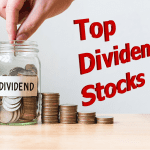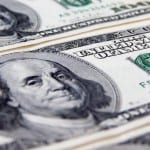Preferred Stocks Offer Steady 4-7% Returns with Reduced Risk
By: Harry Domash,

By Harry Domash
Corporations sell preferred stocks for the same reason that they sell bonds — to raise cash.
Although preferred stocks trade the same as regular stocks, investors typically buy the so-called “preferreds” for the steady dividends, which typically equate to 4.5% to 8% market yields, not for capital appreciation. Unlike common stocks, you won’t enjoy much preferred share price appreciation if your company comes up with a hot product.
That said, preferreds issued by currently out-of-favor public companies often trade at significant discounts, with some offering 25% to 50% appreciation potential, if the issuers recover from and survive whatever issues currently cloud their outlook.
What’s Preferred about Preferreds?
Preferred stocks are called “preferred” because a firm must pay any dividends due on its preferred shares before it can pay common stock dividends. Moreover, when a company files for bankruptcy, preferred holders have priority over common stock shareholders. Lots of luck benefiting from that! When a company fails, both common and preferred shareholders usually get nothing.
Here’s another worthless distinction you frequently hear: unlike common stock holders, preferred shareholders don’t get to vote on company proposals. In fact, while that might be significant for mutual funds and other institutional investors, mom and pop shareholders like you and me have almost no influence on a corporation’s policies.
Nuts & Bolts
When a company issues a preferred stock, it sets the annual dividend and sells the shares at a preset price, typically $25. However, that $25 figure is not set in stone. Some firms have issued preferreds at $10, $50 or $100 per share.
The initial yield, called the “coupon rate,” is the annual dividend divided by the issue price. For instance, the yield on shares paying $1/year on shares issued at $25 is 4%.
After an initial public offering (IPO), preferreds trade on the open market just like regular stocks. So the daily trading price depends on supply and demand. Thus, if the shares mentioned above slip to $24, the yield to new investors (market yield) rises to 4.2% ($1 divided by $24).
Ticker Symbols
Companies that issue preferred stocks often sell more than one series. For instance, they usually label the first issue, Series A, the second Series B, etc. Unfortunately, preferred ticker symbols are not standardized and vary from broker to broker and from financial website to financial website.
However, most start with the issuer’s common stock symbol and end with the preferred series designator. For instance, the ticker for Wells Fargo (WFC) Series X preferreds might be WFX-X, WFX-PX, WFCPRX, etc. That’s not as much of a problem as you might think. On any given site, use the symbol lookup function and enter the issuer’s common stock ticker. Most sites respond by displaying all tickers starting with those letters. From that list, find the ticker ending with the desired series designator. After you’ve done it once or twice, you’ll probably be able to figure out the ticker for other preferreds on that site without needing the lookup function.
Calling Preferreds
Most preferreds are callable, meaning that the issuer has the right to call (redeem) them at the “call price” after a specified date (call date), typically five-years after issue. The call price is usually the same as the original issue price.
Keep in mind that the issuer is not obligated to call its preferreds on the call date, and most are not called that soon. Firms call their preferreds when they can save money by issuing new preferreds paying lower interest rates (dividend yields). Thus, depending on prevailing interest rates, preferreds might continue to trade for years after the call date. Also, if the preferreds were trading below the call price, the issuer probably would buy them back on the open market rather than pay the call price.
If not called, many preferreds have 30-year maturities. Some though are perpetual, meaning that the firm is not obligated to redeem them.
Market Yield
A preferred’s coupon rate defines its annual dividend, but not the yield you’d receive if you bought them on the open market after the IPO. For instance, a 5.0% coupon rate preferred issued at $25 per share pays $1.25 per share annually (5% of $25). However, if you pay $26 for the same preferred, your yield drops to 4.8% ($1.25 divided by $26). So, your market yield is the yield you actually earn based on the price you paid for the shares. Currently, you should have no problem finding preferreds paying 5% to 8% market yields.
Yield to Call
With banks paying next to nothing in terms of money market interest rates, many investors have turned to preferreds instead, pushing share prices up. Consequently, most preferreds are trading above their call prices.
Here’s the downside: If you pay $28 for a preferred that was issued at $25, you will lose $3 when and if it’s called. So, you must take that $3 per share loss into account when figuring your actual return.
Yield-to-call (YTC) does that. It computes your average annual return assuming that you purchased a preferred at its current trading price and it would be called on the call date. That is a worst case scenario, since most preferreds are not called that soon. As a rule of thumb, require a minimum 3% YTCs for all preferreds. In the current market, you should be able to find a few preferreds with 6% to 7% YTCs.
Rather than doing the math, many websites offer “yield-to-call” calculators. Here’s a link to one.
Preferred Stock Risks
Preferred stock investors face three major risk factors: 1) dividend suspension or company failure, 2) rising interest rates and 3) low trading volumes.
Dividend Suspension/Company Failure
Firms facing cash flow problems will suspend paying preferred stock dividends and, in the end, many will file for bankruptcy. Either of those events would sink preferred share prices.
Consequently, you must understand a preferred issuer’s financial strength before buying. If you don’t want to analyze the issuer’s balance sheet, you can tell a lot about a firm’s outlook from its trading price. Specifically, share prices below $5 describe a shaky outlook, while a solid one trades above $50 per share. Here’s a rule of thumb to use when evaluating preferreds.
Issuer trading price below $5 per share: Avoid, high risk.
Issuer trading price $5 to $25: Caution, medium risk.
Issuer trading price $25 to $50: Caution, low/medium risk.
Issuer trading price $50+: Low risk.
Credit Ratings
Many preferred stocks are assessed by bond rating agencies such as Moody’s and Standard & Poor’s. They use a combination of letters, numbers and plus or minus signs such as AAA, BA1 or B- to rate the preferreds. The details vary between agencies, but all ratings starting with A, and three letter ratings starting with B, indicate investment quality. You can see Moody’s and S&P preferred stock credit ratings by going to Quantum Online.
Beware, bond-analysts sometimes overlook the obvious. For instance, in 2007, many didn’t realize that falling home prices would reduce the value of mortgages secured by those homes. Thus, it’s up to you to keep up with the news and avoid industries with obvious problems.
Since issuers must pay Moody’s or S&P’s to be rated, not all preferreds are actually rated. Unrated preferreds aren’t necessarily risky. it just simply means that the issuer didn’t choose to pay for a rating.
Interest Rate Risk
The threat of rising interest rates usually pressures preferred share prices, at least in the short-term. Long-term, modest interest rate hikes won’t matter. For instance, currently, money market funds are paying less than 1%. So a rate hike to 1.25% or 1.5% wouldn’t matter much. But, you’d probably think twice about buying preferreds if you could get 4% or 5% from a money market account.
Trading Volumes
Many preferred stocks are not widely followed and are lightly traded. Those are risky because the lack of trading volume makes it difficult to move in or out of a position at a reasonable price. Avoid preferred stocks trading less than 4,000 shares daily, on average. You can usually see preferred trading volumes on your broker’s website.
Preferred Stock Tax Issues
Dividends from some preferreds are subject to the maximum 15%/20% dividend tax rate, while others are taxed as ordinary income. That can make a big difference. For instance, $1.00 of dividends taxed at 15% nets out to roughly the same amount as $1.30 taxed at the maximum 35% ordinary tax rate. For each preferred, Quantum Online specifies whether the 15%/20% maximum rate applies.
Evaluating Preferred Stocks
Evaluate preferreds by analyzing the issuer’s ability to keep paying preferred dividends. Beyond that, it doesn’t matter whether the issuer’s latest earnings came in above or below analysts’ estimates, etc.
Here are some selection criteria to keep in mind.
Current Price vs. Call Price: ideally, the current preferred trading price would be below the call price, and should never be more than 15% above the call price.
Credit Rating: conservative investors should stick with investment grade (any rating starting with “A” and the three “B” letter ratings).
Trading Volume: minimum 4,000 shares, traded daily, on average.
Issuers common stock trading price: minimum $5 and higher is better.
Preferred Stocks Glossary
Convertible: holders have the right to convert preferred shares to common stock at a predetermined ratio after a specified date. This gives preferred holders a chance to benefit from the common stock’s share price appreciation.
Cumulative: skipped dividends must still be paid before common stock dividends are paid and before the shares are redeemed.
Ex-Dividend Date: you must purchase shares prior to the ex-dividend date to receive the corresponding payout.
Issue Price: original share price.
Liquidation Value: same as issue price.
Non-Cumulative: depending on the preferred, skipped dividends can be delayed for five years, or even indefinitely.
Par Value: same as issue price.
Senior Notes: Issuers cannot skip preferred interest payments (dividends) without going into default.







